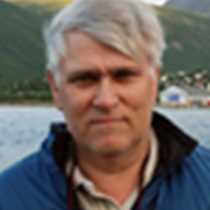Bjørnøya, Barents Sea
It is hard not to become fascinated with the isolated islands we come across as we scan over the world map. Lindblad Expeditions is one of the few who can take you to some of these, and for sure Bjørnøya would stand out as one, with its geology, location and climate. The island is more or less halfway between southern tip of Svalbard and the North Cape of Norway. It lies at the meeting point of the warm water of the Gulf Stream going north and the cold westerly Siberian Current. The temperature difference between the warm and cold water produces dense fog which for the most of the summer engulfs the island. Add to this its lonely location in the Barents Sea on the western edge of the continental shelf and under the influence of severe winds from almost any direction, and your visit will be different every time. More or less the whole island is guarded by underwater rocks, reefs and high cliff faces, and to land anywhere is a challenge and something you can do only in exceptionally good weather conditions.
Exactly how many ships over the years have been wrecked along this hostile coastline we never will know, but the last was as recently as March 2009, MS Petrozavodsk. There are endless accounts telling horrific stories about sailors trying to get ashore after their ships had sunk. A few made it and had to spend a full high Arctic winter in complete darkness. In fact one crew even built a small boat and was able to sail back to mainland Norway, one of the lucky few.
The island was first seen by Willem Barents in June 1596 and here they killed a polar bear and named the island after its bears, “Beeren Eyland”. Polar bears do regularly visit the island as the sea ice usually reaches this far south in March. As the ice moves away to the northeast throughout the summer, the bears do the same.
In 1603 an English expedition was sent out by the Muscovy Trade Company, established by Sebastian Cabot in London about 1550. This expedition rediscovered the island and named it Cherry Island after their sponsor Sir Francis Cherry. Both the English and Dutch were soon back to hunt for the walrus, which they killed by the thousand, over and over again. Nowadays walrus are rarely sighted at the island. With the rich and productive ocean nearby, the island of Bjørnøya is home to a remarkable number of breeding seabirds. Once estimated at about one million, there are fewer today, but the current breeding numbers are still impressive.
During lunch our ship, National Geographic Explorer, dropped her anchor in the protected Sørhamna. As a strong northeasterly wind and swell made it impossible for any landing at Kvlarossbukta on the southeast side, our focus became a magical Zodiac cruise along the more protected cliff faces along the south end of the island.
The sedimentary cliff faces, rising up to 400 meters high, were teaming with breeding seabirds. Although the auks had already departed with their chicks, tens of thousands of kittiwakes and plenty of fulmars were still using the ledges, and patrolling great skuas and glaucous gulls were attacking the newly fledged kittiwakes.
The whole fleet of Zodiacs was launched and, apart from the birds, our attention was drawn to the soaring cliff formations pierced by arches and caves, and the amazing “Pearly gate” tunnel, more than 180 meters long, which made this Zodiac cruise even more spectacular. Some boats made it around the very southwest corner and got a glimpse of the 75 meters high pinnacle Nålen (the Neddle)
Everybody who went out on that Zodiac ride will never forget it. However, a few of the Zodiacs not taking part in the cruise ventured further out. Their aim was very different. The waters around Bjørnøya maintain a huge marine population of cod (Gadus morhua) around the island. In fact every year about 300,000 tons are fished by the Norwegian and Russian fishing fleets but under a quota system. Today this population of cod is the only healthy one left in the whole North Atlantic. Our crew was able to get a substantial catch and we are likely to see this on the menu for dinner tomorrow, “crew-caught cod”. Can it be better?
After a day enjoying this mystical island it is easy to understand why Alistair McLean was able to write his novel “Bear Island”. Now we are steaming further south.




